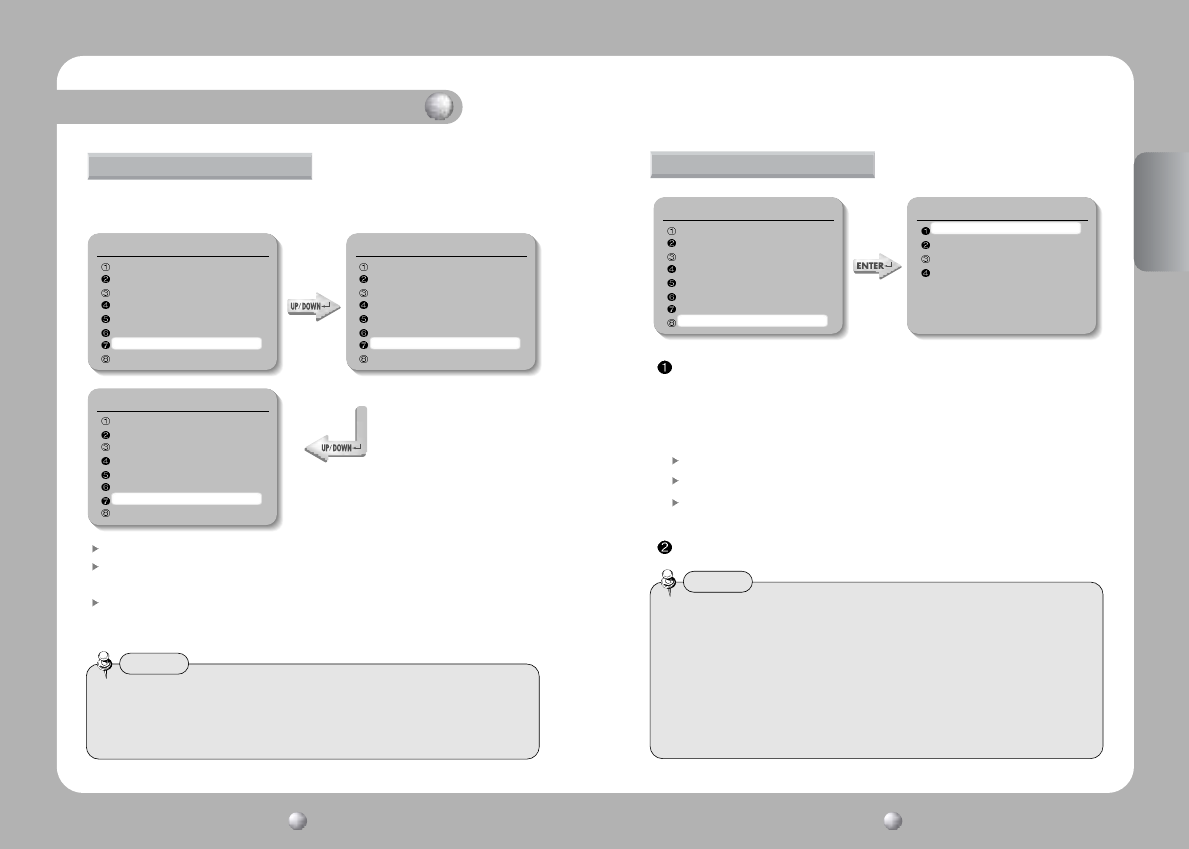
SPEED DOME CAMERA User’s Manual
41
ENGLISH
SPEED DOME CAMERA User’s Manual
40
COLOR :
Output images are displayed in colour all the time. Burst signal size can be adjusted.
B/W : Output images are displayed in black and white all the time. Burst signal
can be kept or removed.
AUTO : Under day condition, the mode is automatically changed into the COLOR
mode to keep an optimum colour. At night, the mode is automatically
changed into the B/W mode to distinguish dark images clearly.
Camera Setting
Focus
White Balance ATW(O)
Exposure
Back Light OFF
AGC MIDDLE
SSNR MIDDLE
Day & Night AUTO
Others
Camera Setting
Focus
White Balance ATW(O)
Exposure
Back Light OFF
AGC MIDDLE
SSNR MIDDLE
Day & Night COLOR
Others
Camera Setting
Focus
White Balance ATW(O)
Exposure
Back Light OFF
AGC MIDDLE
SSNR MIDDLE
Day & Night B/W
Others
Functional Description
The darkness level is detected automatically under low light conditions such as
at night or under dark light to keep the screen bright and clear.
Day & Night
• If the AGC is in OFF mode, the Auto mode cannot be used. Only COLOUR or B/W
mode can be used.
• If the sunlight or halogen lamp is used in B/W mode, the focus may be blurred
compared with the general illumination.
Notes
Sync: Internal Sync or Line Lock can be selected. Internal Sync is selected by
default. Line Sync function can adjust the output phase of more than 1 unit
without using sync signal generator. When the AC Line Lock is selected, the
phases can be adjusted from 0 to 360 levels. Accordingly, the phase can be
adjusted up to 360˚.
Internal : Internal synchronization
Line Lock : Power line synchronization
Line Lock Phase : The phase of line sync can be selected from 0˚ to 360˚. Initial
value is 225˚.
DIS(Digital Image Stabilizer) : Corrects camera shake.
Others
Ohter
Sync INTERNAL
DIS OFF
Image Adj
Freeze OFF
Camera Setting
Focus
White Balance ATW(O)
Exposure
Back Light OFF
AGC MIDDLE
SSNR MIDDLE
Day & Night COLOR
Others
• The DIS may not function properly under the conditions described below:
1. Darkness (little or no light) around the subject
2. No contrast on the subject
3. Camera shake speed that is too fast and might not be corrected
4. DIS is disabled while executing pan, tilt, zoom, or focus, or while displaying the
camera settings menu.
5. When DIS is ON, part of the screen is ignored before the correction is made.
This results in narrower angle of view and reduction in resolution.
Notes


















